IDS Updates
The UCLA Introduction to Data Science (IDS) Project of Center X and the Department of Statistics is proud to announce generous funding from Valhalla Foundation to expand the IDS mission to improve data literacy for K-12 students and to increase diversity in STEM education.
IDS Director Suyen Machado joined Freakonomics author Steven Levitt, Afua Bruce of Carnegie Mellon University, and Karina Edmonds of SAP for a panel discussion at the March 2022 SXSW EDU Conference “In 2032, Work Will Be Data Centric. Are We Ready?”
Listen here for their discussion about how educators, policymakers, and industry leaders can better equip our youth for success through Data Science education.
Articles About IDS

Teaching data to tens of thousands of high school students around the world
Posit, May 31, 2023

Calmatters, June 30, 2021
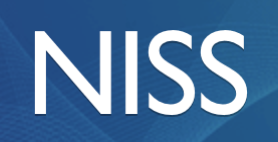
National Institute of Statistical Sciences
Math curricula are designed to shepherd students toward calculus. Some mathematicians think this path is outdated
Daniel Rockmore, Sept. 28, 2020
Erin Richards, Feb. 28, 2020

Catherine Gewertz, Feb. 4, 2020

Jo Boaler, Steven D. Levitt, OCT. 23, 2019

Steven D. Levitt, October 2, 2019

Joel Walsh, May 23, 2019

Hari Sreenivasan, May 14, 2019

Pamela Burdman, April 8, 2018

Connie Zhou, February 27, 2018

Katrina Schwartz, February 26, 2018

Carolyn Jones, February 19, 2018

Mike Szymanski, November 4, 2015

Ryan Menezes, April 27, 2015

David Bernier, May 21, 2015
Teaching data to tens of thousands of high school students around the world
posit
Introduction to Data Science (IDS) is an interactive high school statistics and probability curriculum created by UCLA and the Los Angeles Unified School District (LAUSD) with a grant from the National Science Foundation. We spoke with Suyen Machado, Director, UCLA K-12 Data Science Education, and Monica Casillas, Associate Director of Professional Development, UCLA K-12 Data Science Education, about how the program has scaled to support hundreds of high schools and tens of thousands of students from all around the world in their pursuit of data literacy.
Read more..
Could data science diversify the stem field why courses designed this century feel so relevant to all students
KQED
There are many reasons students don’t like math: stressful timed tests, right and wrong answers, isolated work, math anxiety learned from adults around you. A 2012 PISA survey found that one-third of high school students feel helpless and emotionally stressed when doing math. And if you don’t see people who look like you succeeding in a subject or a field, it can be isolating, especially for young people.
Read more..
21st-century math gets out of the box
Calmatters
Awash with data and powered by computers, our lives look very different than they did a few decades ago, as do the ways we research and learn about the world. Whether the topic is political polling, COVID-19 epidemiology, police shootings, or sports statistics, understanding data is key to making sense of our social and natural environments.
Read more..
Statistics or Data Science for K-12 Education?
National Institute of Statistical Sciences
What are the challenges and changes that have happened to teaching stats and data science in grades K-12 over the years? What has worked? How do we best equip our students with the data skills they need, after all, the kids in school today are the future! The goal of this session was to facilitate a conversation around the most relevant and urgent questions that are facing statistics and data science education in grades K-12 today.
ISS brought together three participants for this session who have extensive experience in statistics education, Anna Bargagliotti, (Loyola Marymount University), Christine Franklin (ASA and University of Georgia), and Rob Gould (UCLA). All three are members of the writing team of the GAISE Pre-K – 12 Guidelines for Assessment and Instruction in Statistics Education II Report, Bargagliotti and Franklin serving as co-chairs of this committee.
Is it time to kill calculus?
Math curricula are designed to shepherd students toward calculus. Some mathematicians think this path is outdated
By Daniel Rockmore | salon
Sept. 26, 2020
Introduction to Data Science was featured in salon.
Many parents relish reliving moments from our childhoods through our children, and doing homework with them is its own kind of madeleine. For Steve Levitt of “Freakonomics” fame — who is, in his own words, “someone who uses a lot of math in my everyday life” — a trip down memory lane vis-a-vis math homework became a moment of frustrated incredulity…
Math scores stink in America. Other countries teach it differently – and see higher achievement.
By Erin Richards | USAToday
Feb 28, 2020
Introduction to Data Science was featured on USAToday.
In the USA, about 3,300 students this year in 15 Southern California school districts are taking a new Introduction to Data Science course that features data and statistics, real-life data collection and coding to analyze the data…
Teaching Students to Wrangle ‘Big Data’
By Catherine Gewertz | EducationWeek
Feb 4, 2020
Introduction to Data Science was featured on EducationWeek.
It’s a blend of statistics and computer science, designed to help students understand and use the “big data” that shapes modern life…
Opinion: Modern high school math should be about data science — not Algebra 2
By Jo Boaler, Steven D. Levitt | Los Angeles Times
OCT. 23, 2019
Introduction to Data Science was featured on Los Angeles Times.
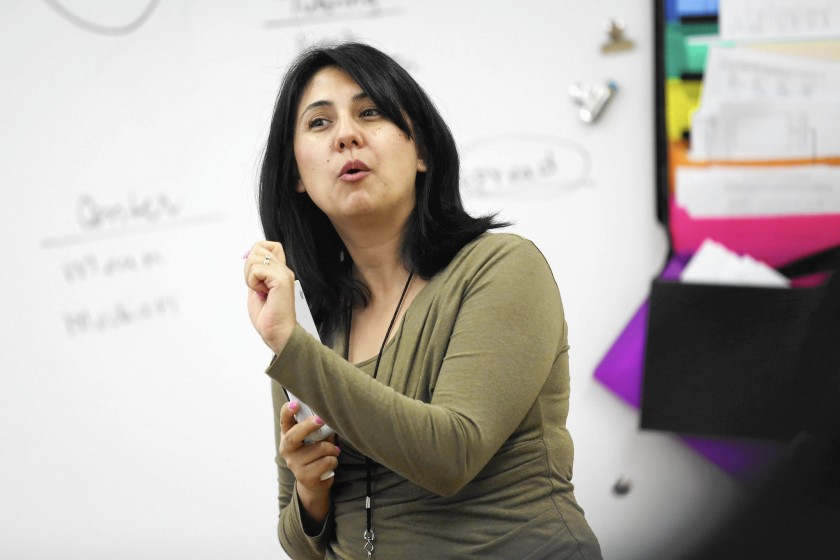
In 2015, Monica Casillas teaches a class that focuses on statistics and computer programming at John H. Francis Polytechnic High School. (Patrick T. Fallon / For The Times)
The Los Angeles Unified School District is leading the way in updating the way math is taught. In 2013, the LAUSD secured approval from the University of California to recognize data science as a statistics course that students can substitute for Algebra 2 in the college pathway. Over 2,000 students are taking advantage of this option. The classroom we observed was full of critical thinkers who see data everywhere and appear comfortable interpreting, analyzing and questioning it.
Modernizing math at a national level will require an intensive effort from educators, policymakers and high school counselors — as well as from students and parents who will need to advocate for it. Some states are already exploring changes to their mathematics frameworks, while a fair number of innovative teachers across the country are independently developing their own data-focused lesson plans.
America’s Math Curriculum Doesn’t Add Up (Ep. 391)
By Steven D. Levitt | Freakonomics
October 2, 2019
Introduction to Data Science was featured on Freakonomics Podcast.
Most high-school math classes are still preparing students for the Sputnik era. Steve Levitt wants to get rid of the “geometry sandwich” and instead have kids learn what they really need in the modern era: data fluency.
Lets Grow a Generation of Data Natives
By Joel Walsh | TEDxUTAustin
May 23, 2019
Are we creating a society of data natives?
Listen to Joel Walsh’s TEDx talk that explains the reasons why we should. Joel highlights IDS as a curriculum that is leading the way in preparing today’s youth to be able to work with data.
Many college students struggle to pass remedial math. Do they need to?
By Hari Sreenivasan | PBS NewsHour
May 14, 2019
Introduction to Data Science was featured on PBS NewsHour’s Making the Grade segment.
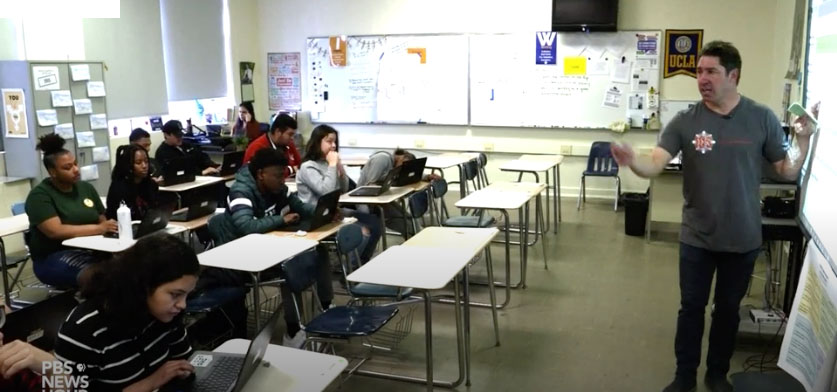
Colleges created remedial education classes to ensure students were sufficiently prepared for more advanced material. But increasingly, there’s a sense that remedial courses are hurting the prospects of the students they are intended to help. As a result, some California colleges and high schools are rethinking their approach to teaching math — with encouraging results. These new approaches include the Introduction to Data Science class, which appears in the video at 3:40.
Mobilize: A Data Science Curriculum for 16-Year-Old Students
Presented By Rob Gould | IDS Lead PI
International Conference for Teaching Statistics (ICOTS) in Kyoto, Japan, July 2018
A quiet revolt reshaping the pathway to college
By Pamela Burdman | EdSource
April 8, 2018

They make up less than one percent of Los Angeles Unified’s high school students, but one day they may discover they helped break through a long-standing barrier to educational opportunity for students in Los Angeles and beyond.
These students, about a thousand juniors and seniors, are collecting, analyzing and interpreting sets of data from their own lives. In the process, they are learning basic statistics and computer programming, not to mention gaining insights into things like their stress levels and snacking habits. “Big data” is not just transforming the way we live and conduct business; it also offers approaches to learning math that can engage students and open doors.
The students are taking a new course, Introduction to Data Science, that UCLA researchers found is fostering critical thinking skills, data awareness and positive attitudes. The course rests at the vanguard of a quiet revolt against the dominance of algebra in the high school curriculum, a revolt that could reshape the pathway to college for years to come.
After being piloted four years ago with funding from the National Science Foundation, the course is now being offered at 21 of Los Angeles Unified’s roughly 100 comprehensive high schools. Another six southern California districts are piloting it, with eight more lining up. The exponential growth speaks to the demand for alternative courses like these.
UCLA faculty designs data analysis curriculum for high school students
BY CONNIE ZHOU | Daily Bruin
February 27, 2018
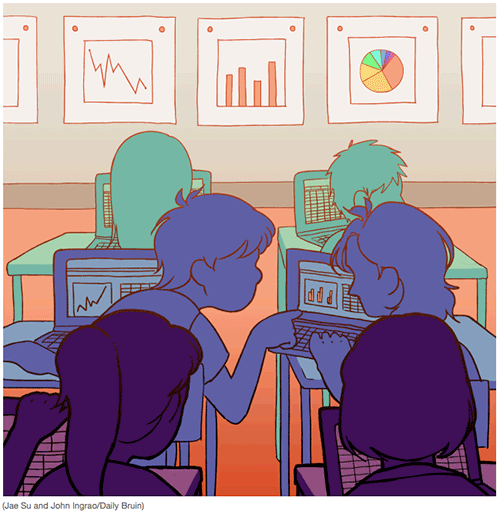
UCLA faculty are working with local school districts to teach high school students big data analysis.
UCLA, in partnership with the Los Angeles Unified School District, received a five-year, multimillion dollar grant from the National Science Foundation in 2010 to design curricula for high school math and science classes with a strong emphasis on computational thinking. The university expanded the curriculum to six additional school districts in Southern California this academic year.
Introduction to Data Science is a yearlong high school course that serves as a prequel to introductory statistics courses, said Rob Gould, leader of the IDS curriculum design team and undergraduate vice chair of the UCLA Department of Statistics. The class teaches students data analysis and programming.
“The course is important because it makes students aware that we are living in a world of data,” he said. “We are living in an age where you really cannot afford to be ignorant about data, so we need to make sure people understand the role data is playing.”
Los Angeles Teachers Give Students a Jump-Start on Data Science Careers
By Katrina Schwartz | KQED
February 26, 2018
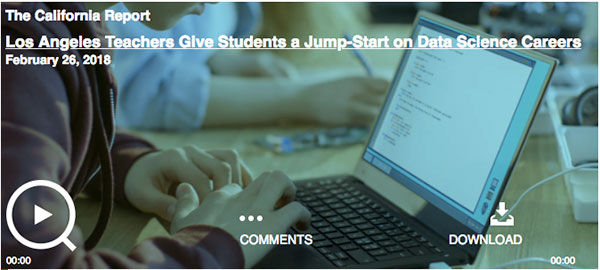
Every time we Google something or buy a pair of shoes online, we’re creating valuable data. And people who know how to analyze that data are highly employable right now. As computing enters every part of life, high school teachers are beginning to see it as their duty to prepare students for this changing world.
The Los Angeles Unified School District has teamed up with UCLA to develop an introduction to data science course that meets University of California and California State University application requirements. Students use a blend of statistics and computer science to analyze data sets they’ve either collected or found.
“They’re learning how to think critically with data,” said Suyen Machado, who helped write the course curriculum and coordinates the program that has spread to 30 schools in six districts.
‘Big data’ classes a big hit in California high schools
By Carolyn Jones | EdSource
February 19, 2018
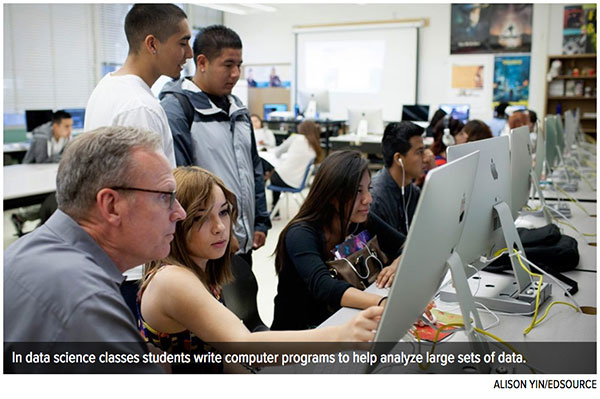
Data science — the study of computer-generated “big data” — is the hottest career in the U.S., according to Glassdoor. And now it’s the hottest math class at a growing number of California high schools.
About 30 high schools in California have started offering data science classes for juniors and seniors, in some cases as an alternative to Algebra 2. A hands-on blend of statistics and computer programming, data science meets the requirements of A-G coursework — the series of classes in English, math, science, foreign language, history and other core subjects necessary for admission to the University of California and California State University systems — and doesn’t require prior knowledge of computers or statistics.
Data science is the study of large sets of data, using computers to look for patterns and trends. In data science classes, students write computer programs that help sort through data and identify regularities — essentially “taking a big data set and dancing around it and getting it to tell you its secrets,” according to math education consultant Tim Erickson, who writes data science curriculum.
And it’s proven to be a popular addition to high school math departments.
Introduction to Data Science comes to the Centinela Valley Union High School District
CVUHSD was 1 of only 5 districts awarded the UCLA California Mathematics Readiness Challenge Initiative grant.
The $1.28M grant will provide for in-depth professional learning opportunities in Mathematics for a collaborative composed of our Mathematics teachers, instructional coaches, school site  administrators, and faculty from UCLA to support the implementation and evaluation of grade 12 experiences that are designed to prepare students for placement in college-level courses in Mathematics. Through this partnership with the UCLA Teacher Education Program, we will be introducing a new Mathematics course, Introduction to Data Science (IDS) and providing extensive professional learning for their Mathematics Teachers.
administrators, and faculty from UCLA to support the implementation and evaluation of grade 12 experiences that are designed to prepare students for placement in college-level courses in Mathematics. Through this partnership with the UCLA Teacher Education Program, we will be introducing a new Mathematics course, Introduction to Data Science (IDS) and providing extensive professional learning for their Mathematics Teachers.
http://www.centinela.k12.ca.us/apps/news/article/635584
Mobilize’s Suyen Moncada-Machado speaks to the LAUSD School Board about IDS and the need for Computer Science instruction.
By Mike Szymanski | LA School Report
November 4, 2015
At a time of high employment demand for computer experts, fewer than half of LA Unified’s 98 traditional high schools offer computer science classes.
“We could have students go through LAUSD without any access to computer science at all,” Suyen Moncada-Machado, a district instructional specialist told a district board committee yesterday as part of a discussion of the district’s computer science programs.
She is involved with Mobilize, a program created by LAUSD and UCLA that’s being replicated in other parts of the country as a math course that incorporates statistics, science and coding. Another course has students design and use computer programs to solve problems.
As the second largest school district in the country, LA Unified is planning to provide all students access to computer science from transitional kindergarten to 12th grade by 2020.
Data science class offers L.A. Unified students a new handle on math
By Ryan Menezes | Los Angeles Times
April 27, 2015

Thomas Navas, 16, a student in the Introduction to Data Science class at Francis Polytechnic High, uses data from the Centers for Disease Control to test his theory that there is a relationship between hours of sleep per night and a person’s height. (Patrick T. Fallon / For the Los Angeles Times)
During first period at Francis Polytechnic High School in Sun Valley, Monica Casillas asked her students to line up in order by height so she could organize a human representation of a “box-and-whisker” plot.
As they filed into place — most boys went to one end, most girls to the other — Casillas drew the data visualization on butcher paper. The rectangle in the center showed the typical heights of the class, with straight lines called “whiskers” extended from the box to show how far away the tallest and shortest students were from the middle.
Thomas Navas, a 5-foot-2 junior, found himself at the end of a whisker, the shortest student in his Introduction to Data Science class.
Standing at the end, Navas wondered what affected his height. Could his lack of sleep — about six hours a night — keep him from growing?
Asking questions of data is the aim of the class, which is being offered at 10 Los Angeles Unified School District high schools this year. The class gives students an alternative to traditional math; its curriculum is grounded in hands-on data collection, plus lessons in computer programming so students can get answers from data, a trade highly valued in many industries.
Introduction to Data Science: An Authentic Approach to 21st Century Learning
By David Bernier | KCET
May 21, 2015

While K-12 computer science has recently seen a growth in awareness and opportunities for learning in high schools through the efforts of programs like Exploring Computer Science and groups like Code.org, there is less public awareness and limited opportunities for learning in areas like Statistics, and in particular the burgeoning field of Data Science, which blends statistics and computing. While colleges, particularly at the graduate level, have been responding to this demand by increasing the number of courses and programs focusing on data science, the K-12 space has thus far seen very little activity that might help to introduce students to these concepts and learning experiences.
Into this mix comes Introduction to Data Science (IDS), a program funded by the National Science Foundation as part of a Math-Science Partnership grant called Mobilize, involving UCLA and LAUSD. IDS is being piloted this school year by ten LAUSD high school teachers, to roughly 365 students. The course has been approved by the University of California Office of the President as a college-prep core mathematics course.
Mobilize tech team wins 1st place in UCLA’s “Code for the Mission” App Competition
Education Category: Closing the US Education Gap
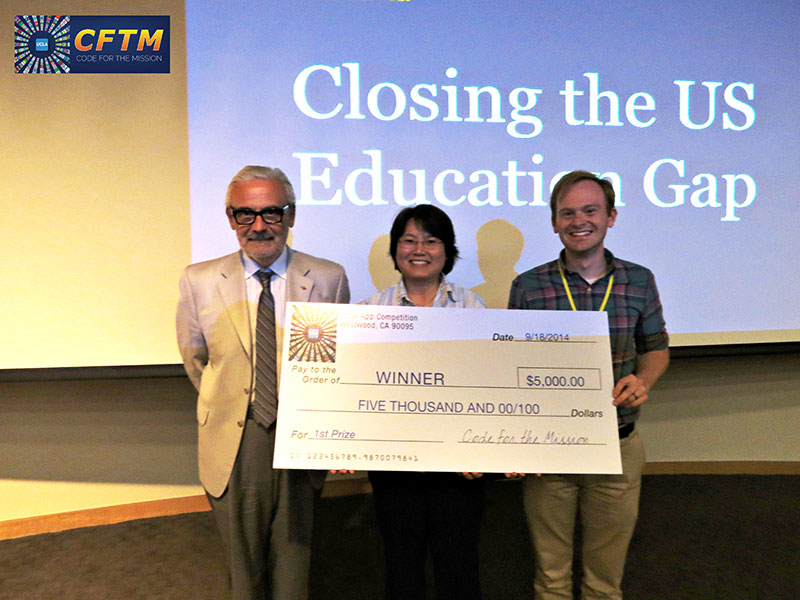
Generalized Ohmage Dashboard
Team: Hongsuda Tangmunarunkit, Steven Nolen, Jerom Ooms
https://codeforthemission.ucla.edu/mission/node/213
“Degrees of Freedom: Diversifying Math Requirements for College Readiness and Graduation”
 April 2015
April 2015
This report by Pamela Burden acknowledges the Mobilize project’s impact on changing mathematics pathways.
See Publications and Presentations for more.
